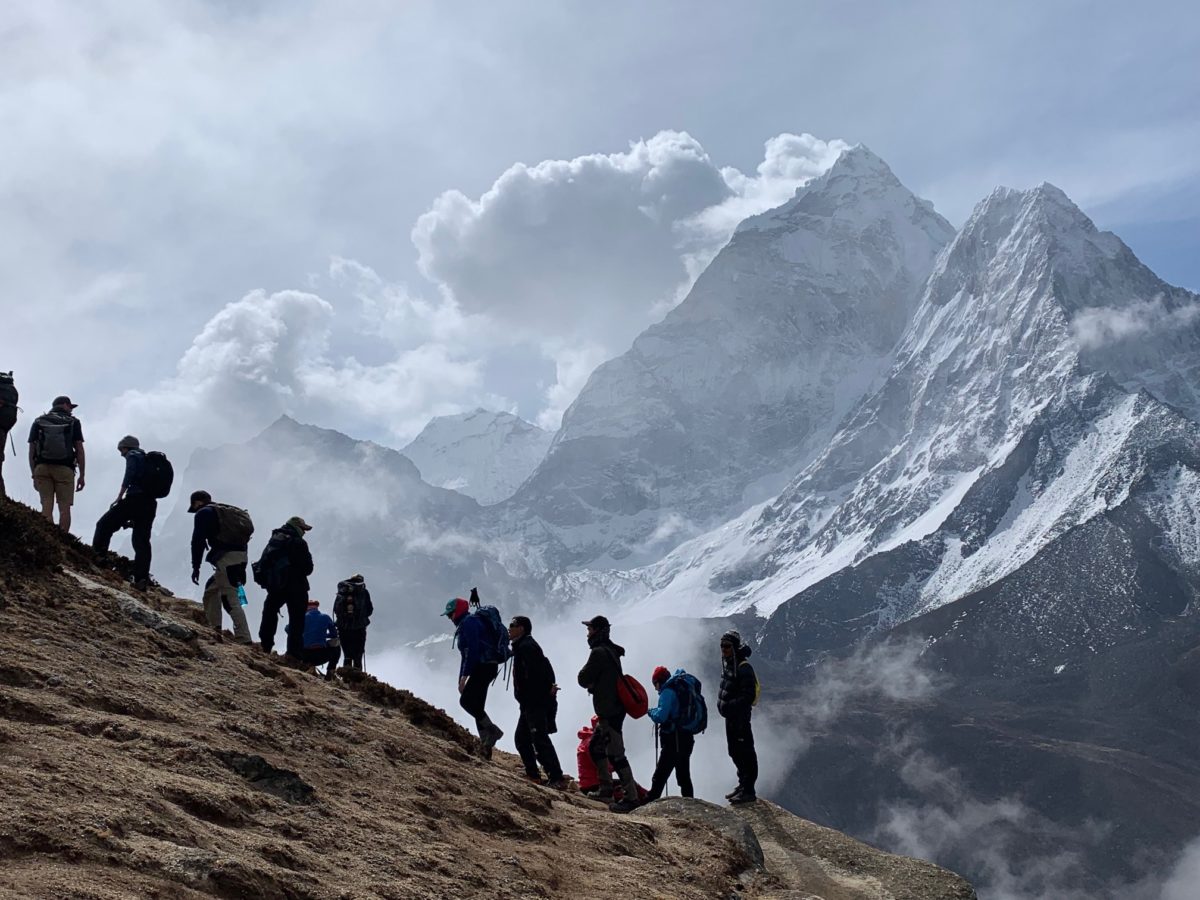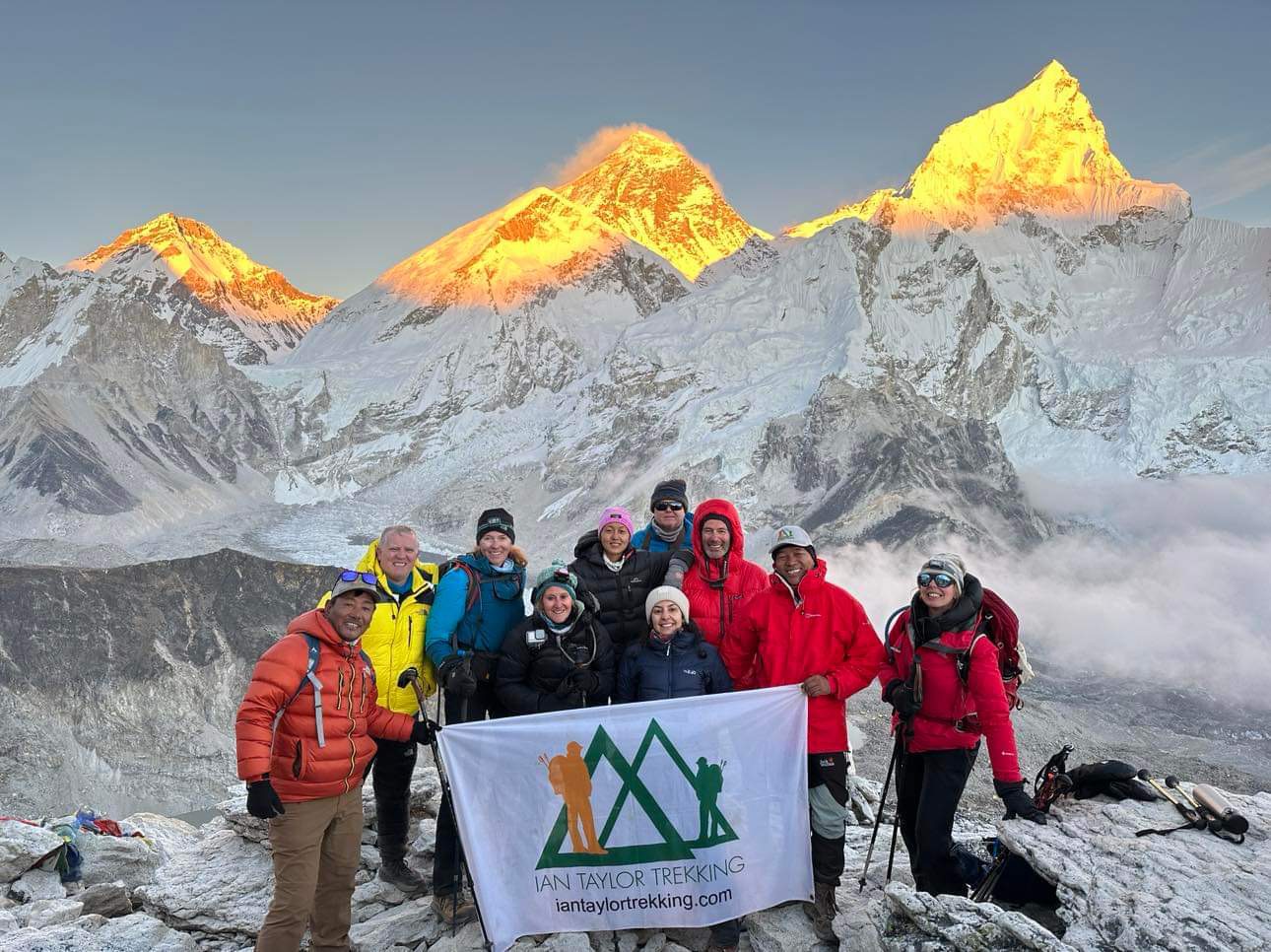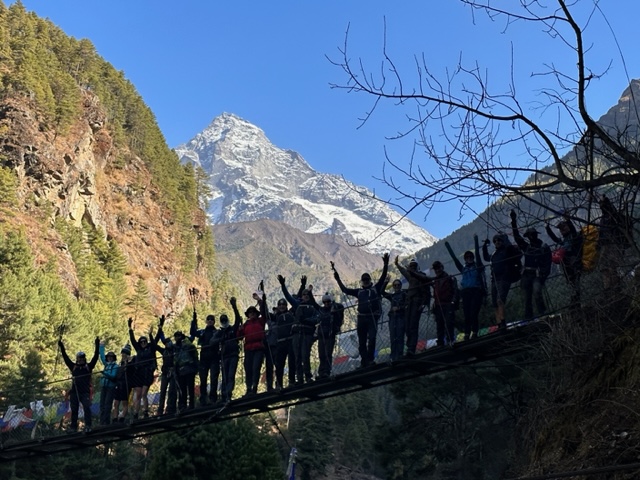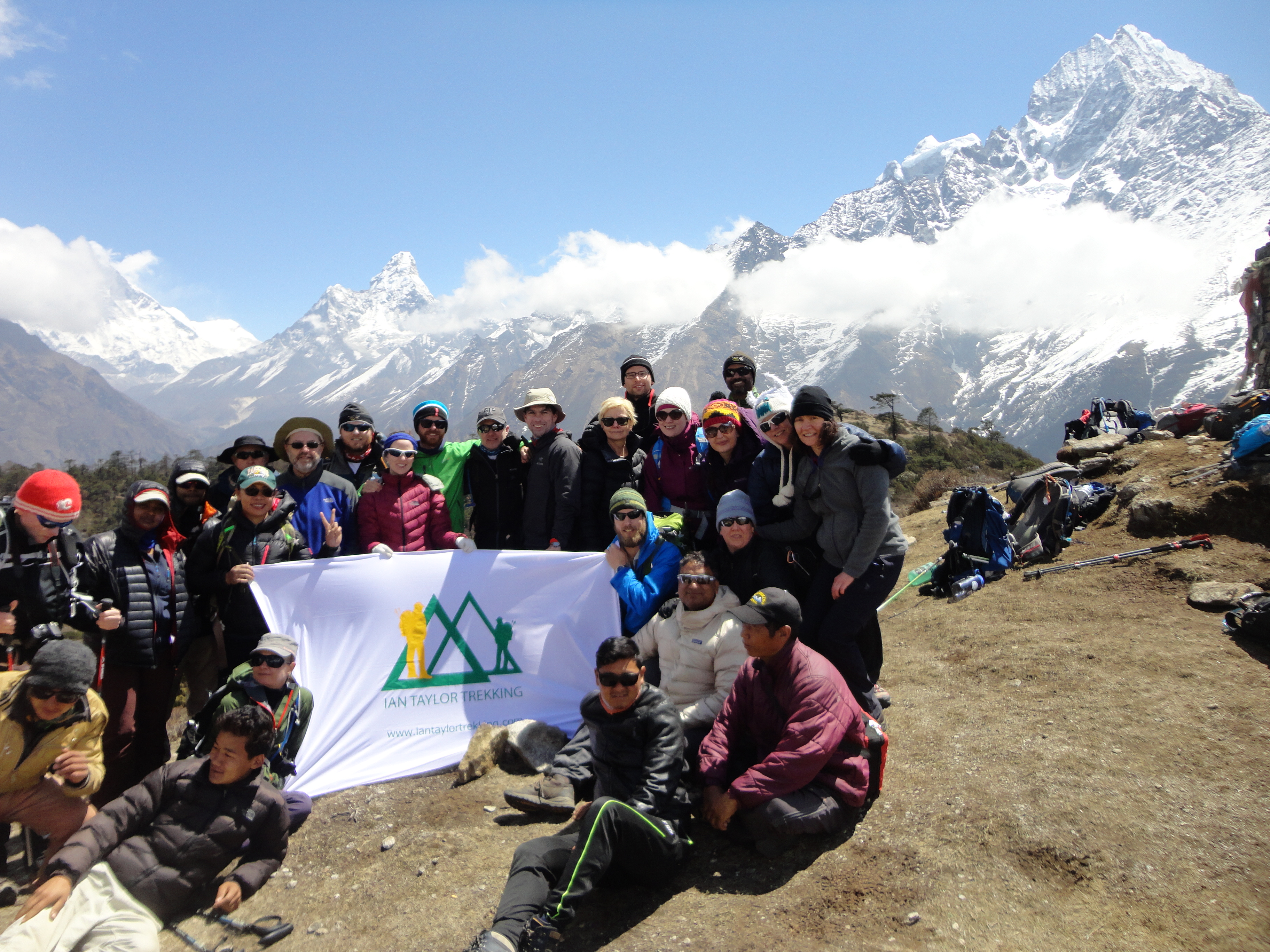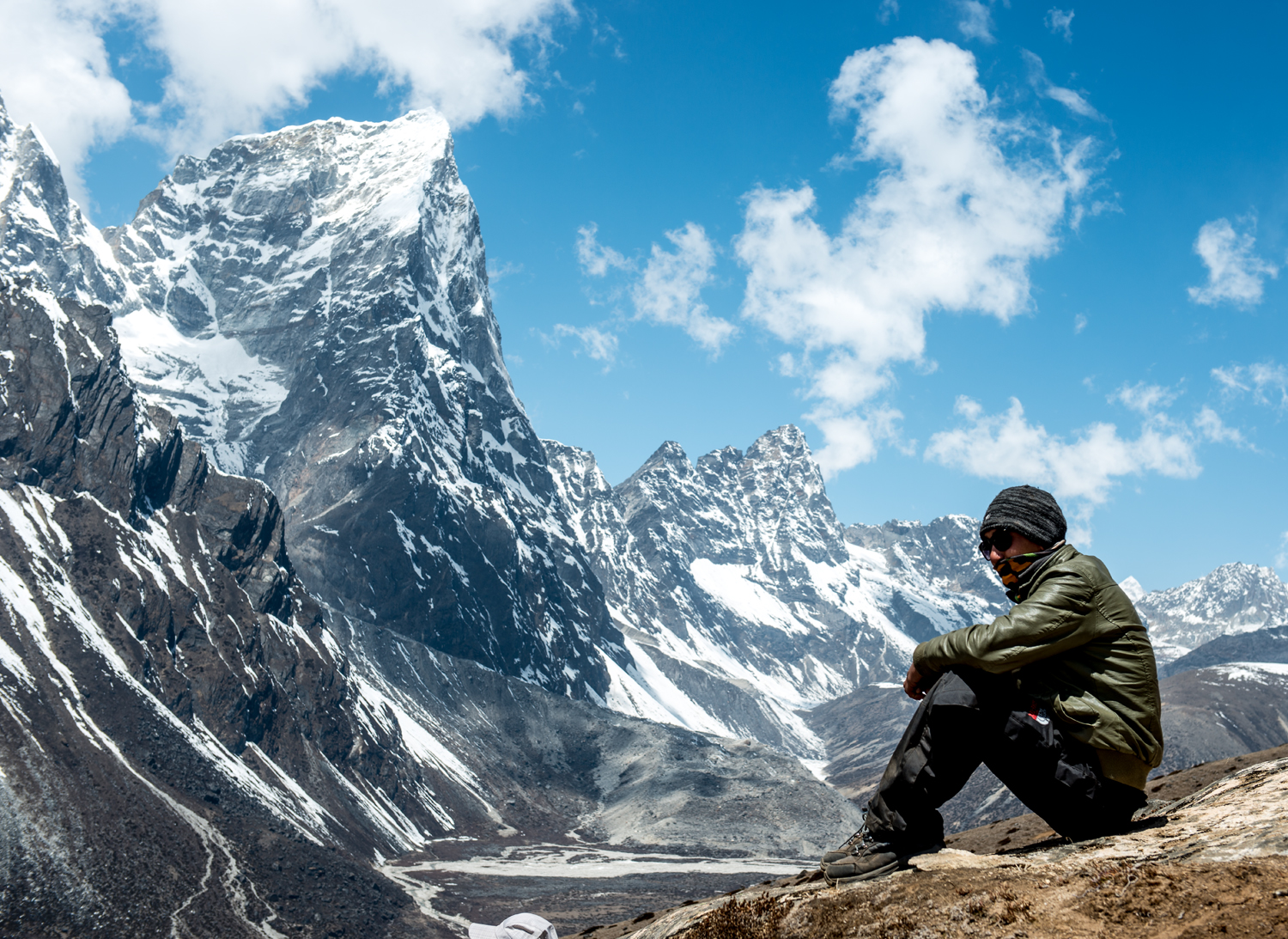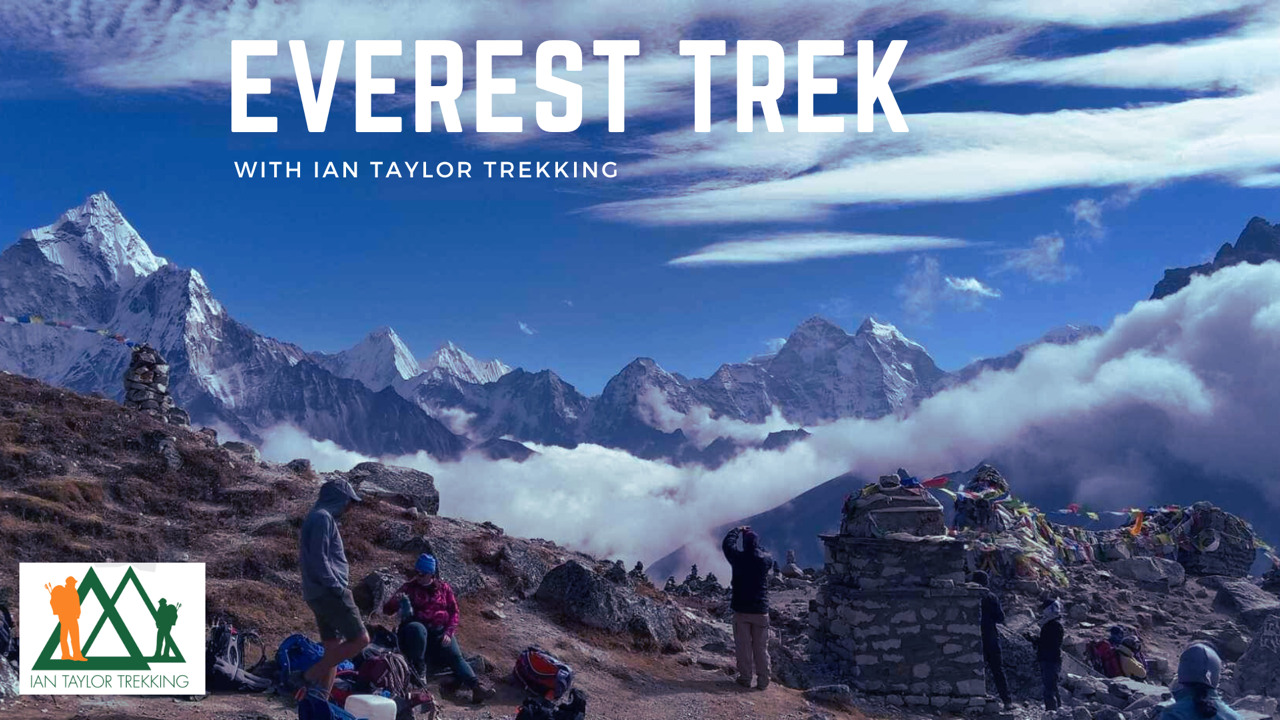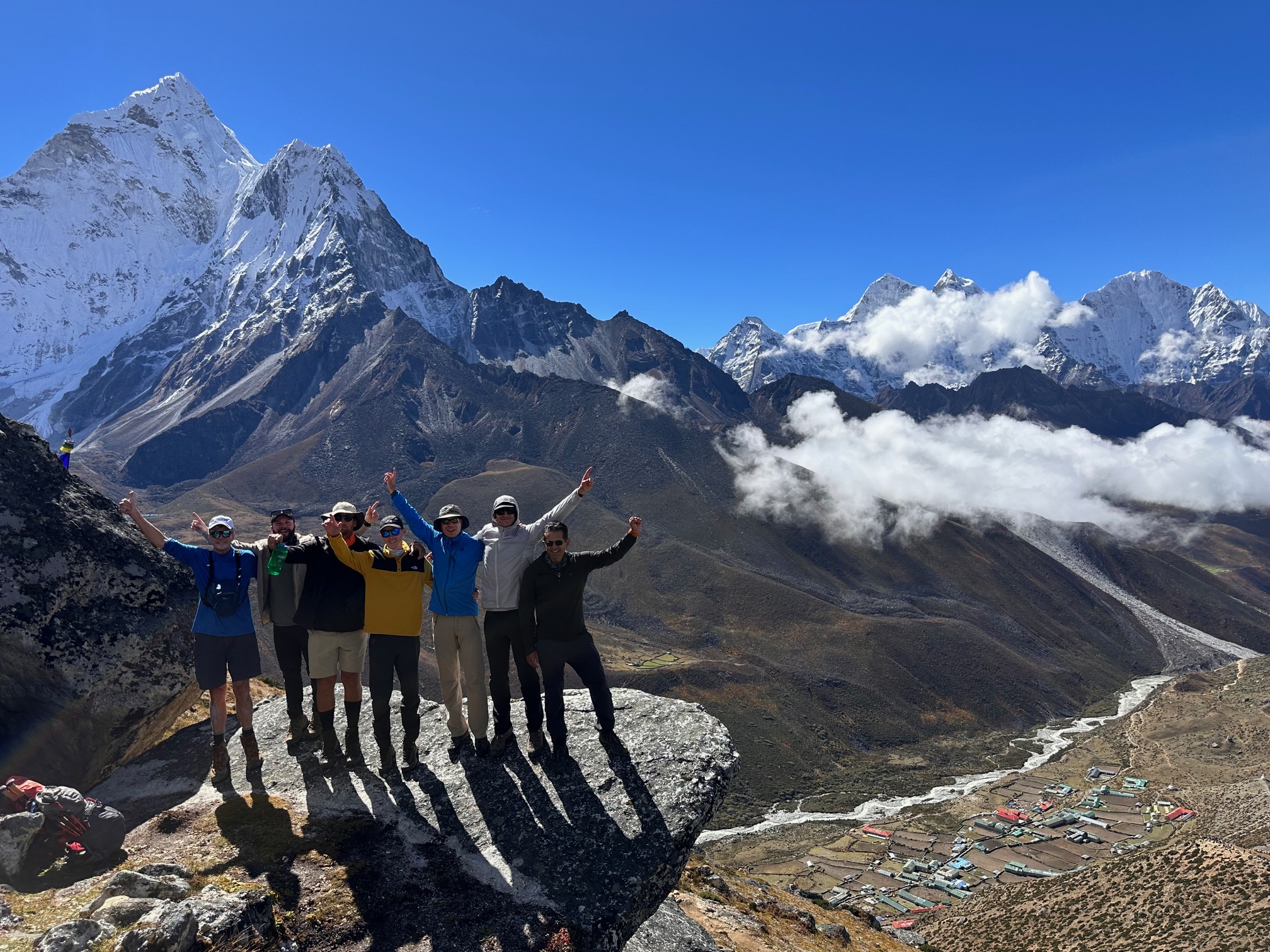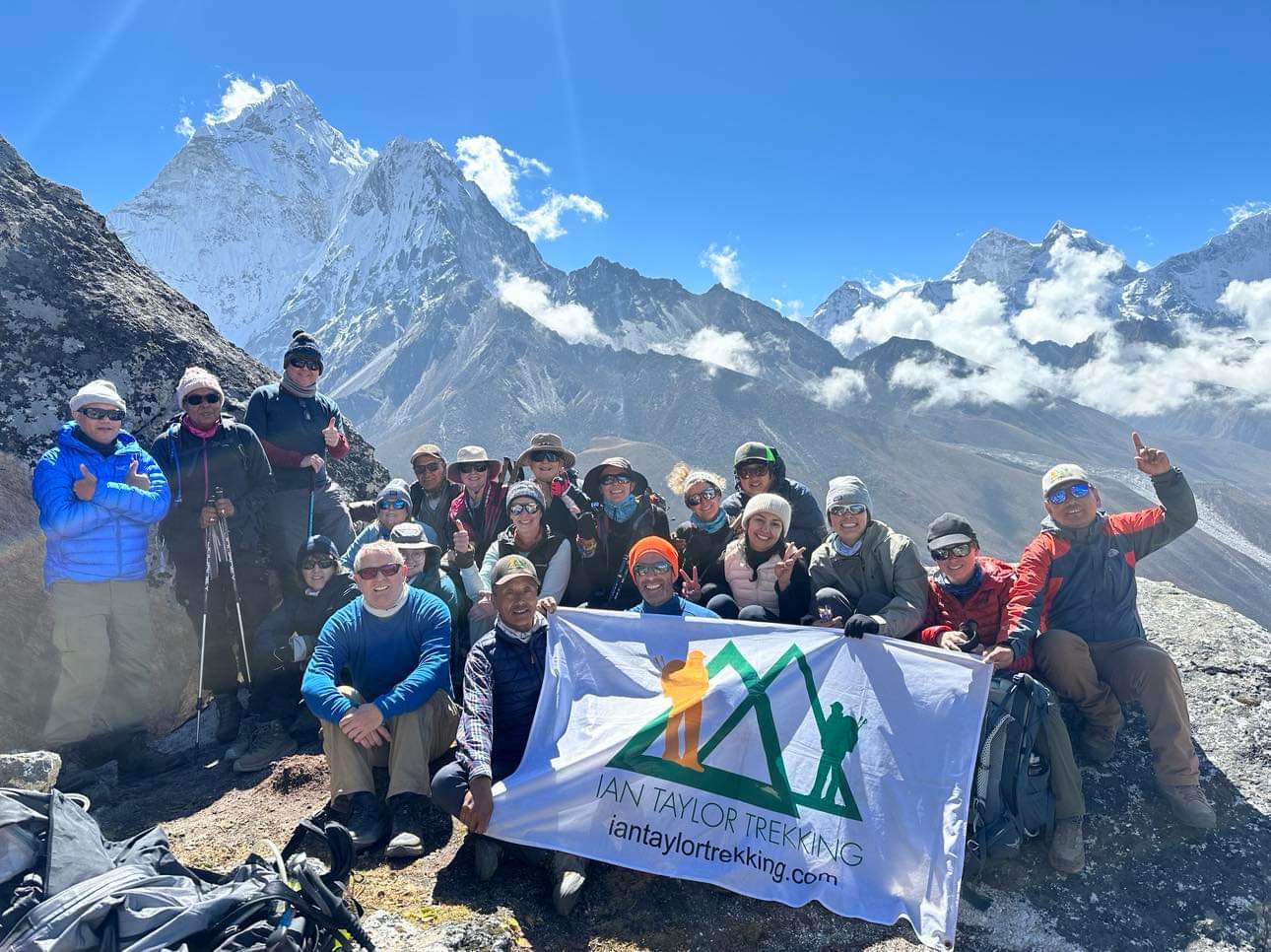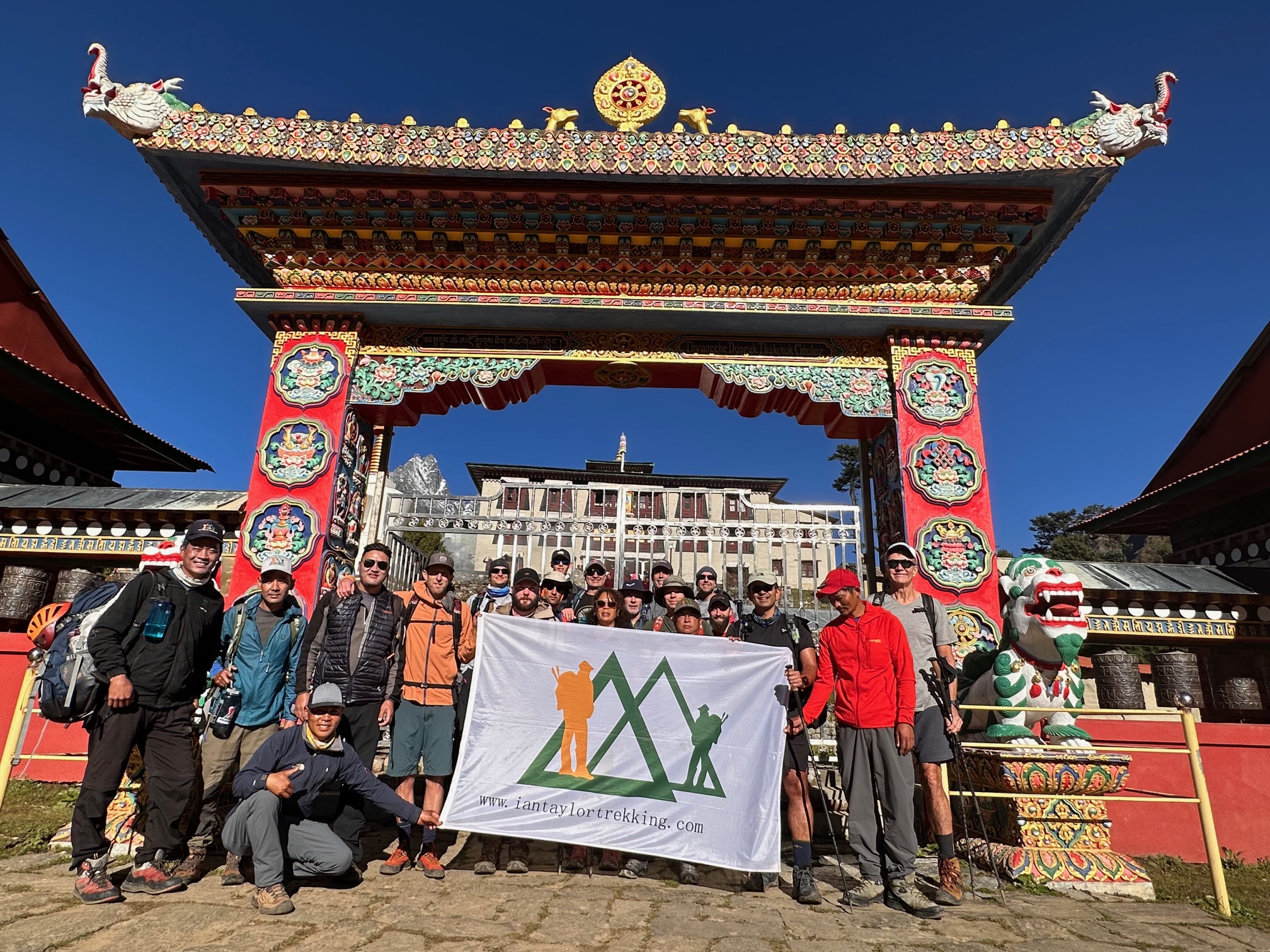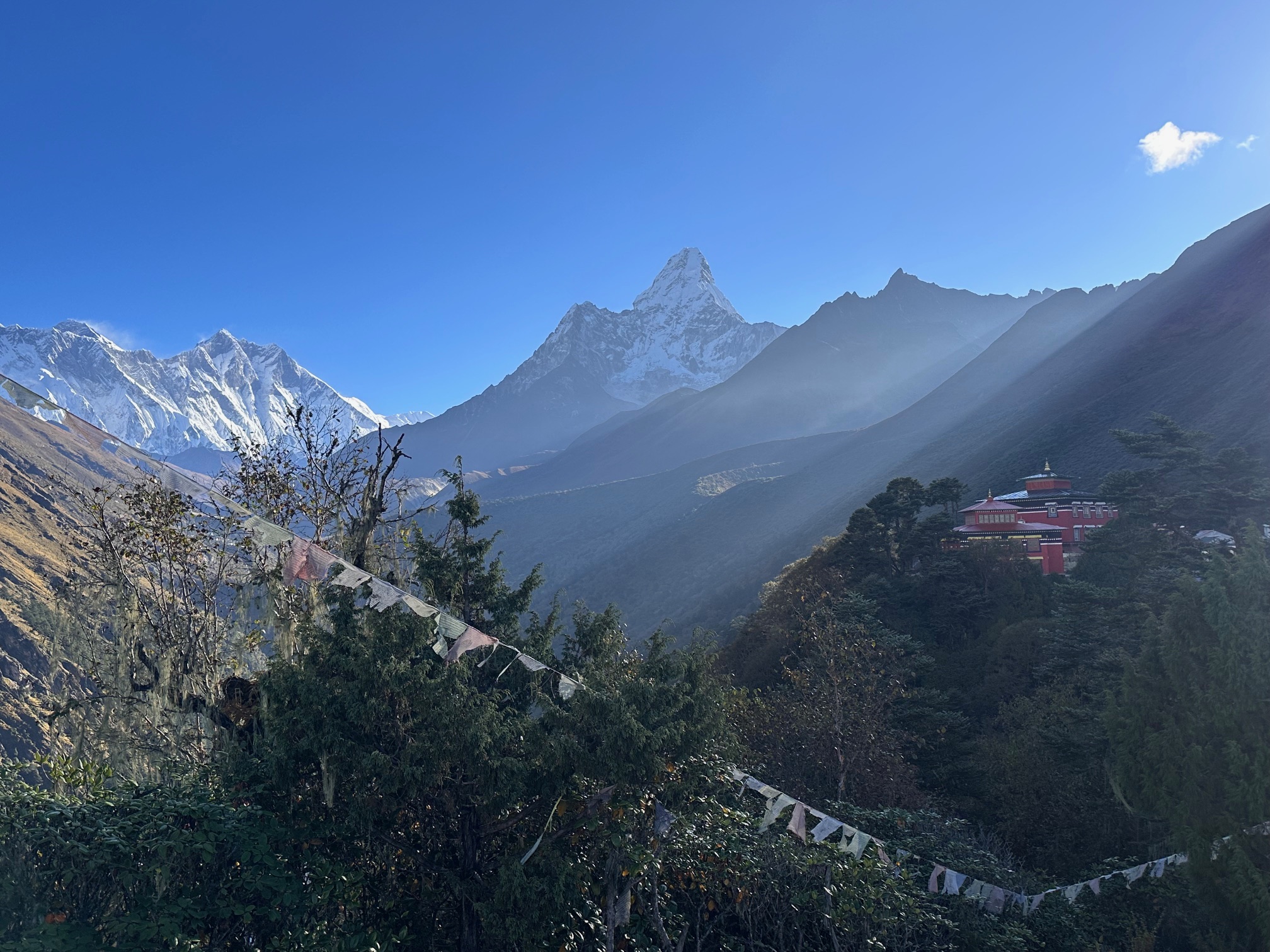The best acclimatization schedule for Everest base camp requires more time on the trek to Everest. It’s simple, give yourself three nights in Namche Bazaar 3,440m/ 11,300 feet on the way up the trail and give yourself a better chance of a safe and successful trek. All our teams spend three nights at this critical height. Check out all our upcoming trips.
Have More Acclimatization
I have climbed to the summit of Mount Everest and made the trek to Base Camp over 40+ times. Over the years, we have come up with the best itinerary to aid in the acclimatization process. If you are looking for the best option to trek to Everest, then check out our itinerary! You can pick up the phone and speak to Ian directly.
The Best Acclimatization Schedule for Everest Base Camp
Finding the time to take a trip can be challenging for most people today. Having enough time off work, help with family responsibilities, or even just finding the money to go on holidays can all be very difficult in this day and age. However, if you are going to make the effort to do a trip like this, then you have to make sure you do it right! Time is needed to acclimatize correctly so you can be safe and enjoy your Everest Base Camp Trek. This is truly an amazing journey through the Himalayas. Therefore, you want to give yourself the chance to see all of it.
Real Research
All the research over the past decade suggests more time is needed in the acclimatization process at 3,500m/ 11,500ft. That is why we spend 3 nights acclimatizing at this height on all our treks.
The trek to Everest Base Camp has so much to offer and should not be rushed for a number of reasons. A trek in Nepal and into the Everest region could change your life. Therefore, you don’t want to rush this journey. You will want to take your time and breath in this phenomenal place. The Himalayas and the majesty of these monstrous mountains will leave you humbled in their mighty presence.
The Best Acclimatization Schedule for Everest Base Camp
Finding the time to take a trip can be challenging for most people today. Having enough time off work, help with family responsibilities or even just finding the money to go on holidays can all be very difficult in this day and age. However, if you are going to make the effort to do a trip like this, then you have to make sure you do it right!
Time is needed to acclimatize correctly so you can be safe and enjoy your Everest Base Camp Trek. This is truly an amazing journey through the Himalaya’s, therefore, you want to give yourself the chance to see all of it.
All the research over the past decade suggests more time is needed in the acclimatization process at 3,500m/ 11,500 feet. That is why we spend 3 nights acclimatizing at this height on all our treks.
Award Winning Team in Nepal
In 2019 we won the International Tourism Award for offering the best itinerary and service for the trek to Everest Base Camp. We have 4 guides for every group pf 10 trekkers, more support and advice before the trek, use better lodges and have full time staff on the ground in Kathmandu.
The Everest Region
The Everest region has so much to offer. We run 4 main itineraries all the option of flying back to Kathmandu via Helicopter. In saying that the trek to Mount Everest should not be rushed for a number of reasons.
A trek in Nepal and into the Everest region can be life changing. Therefore, you don’t want to rush this journey. You will want to take your time and breath in this phenomenal place. The history, culture and Sherpa people are worth learn from. The Himalayas and the majesty of these monstrous mountains will leave you humbled in their mighty presence.
Come Physically Prepared
You will need to have excellent physical conditioning when coming on a trek like this. If you sign up to one of our treks we will help you prepare. Ian and our team will be available to you 5 days a week when not on trips. We are here to help you build your fitness, conditioning and fully prepare for your journey to Everest Base Camp.
Give Yourself the Best Chance at Success
The key is getting the acclimatization schedule correct. We have done the trek to Everest Base Camp over a wide range of number of days. It is very clear that the more time you spend at critical points on the acclimatization schedule, the better you feel. Not only are you giving yourself the best chance at successfully reaching Base Camp, but you are also giving yourself the time to fully enjoy the experience. There is no reason to rush from village to village on this journey. Take the time, enjoy the views, culture and people of the Himalayas!
The Best Acclimatization
The best acclimatization schedule for Everest Base Camp needs to have an acceptable acclimatization period on route to high altitude. Recent high altitude research suggests that you will need more time to adjust to the lack of oxygen at 3,500m/ 11,500 feet. Adjusting to the low levels of oxygen and acclimatizing needs time.
Therefore, if you fail to acclimatize well lower down, you will really struggle higher up. The closest town at this critical height is Namche Bazaar at 3,440m/ 11,286 feet. For that reason, our itinerary spends three night at this height and critical for your safety moving higher.
Three Nights in Namche Bazaar
By spending three nights in Namche Bazaar, we have found our success rates have greatly improved. It gives you the best chance to make a successful, safe and enjoyable experience high into the Himalayas. There will also be an additional two nights acclimatizing in Dingbouche, at 4,350m/ 14,272 feet. This will set you up nicely for the journey above 4,900m/ 16,000 feet, where there is a dangerous lack of oxygen. Above 5,638m/ 18,500 feet, you enter the base layer of the death zone. This means your body would slowly be dying above this height, and can not fully adjust to the low levels of oxygen.
Reaching Kala Patthar
The highest point on the Everest Base Camp trek is Kala Patthar, at 5,645m/ 18,520 feet. So you are getting really close to that extreme altitude level. With 50% less oxygen getting to your muscles, you have to make sure you acclimatize correctly in the early stage of the trek. If you acclimatize better lower down in Namche Bazaar, the better acclimatized you will be when you arrive above 5,000m/ 16,404 feet.
Spend the Time, Reap the Benefits
For two years, we ran 50% of our treks with only two days in Namche Bazaar. The other 50% of the treks ran with three nights in Namche. We set up an O2 test on each client over the space of a year. Our research suggested a big difference between how clients reacted to two and three nights spent acclimatizing in Namche Bazaar.
We saw an 85% increase in peoples statistics. Concluding that people who spent three nights in Namche Bazaar at 3,440m/ 11,286 feet, stood a far better chance of not getting altitude related sickness. Without a doubt, this additional acclimatization is what helped clients feel better higher up and get more from their Everest Base Camp experience.
Research Based Everest Itinerary
After completing this research, we then decided to add an additional night in Namche Bazaar to all our Everest Base Camp treks. Which is giving us far better results from our Everest Base Camp treks.
We have a 95% success rate with clients enjoying their adventure, experience and journey into the magical mountains of Nepal. Similarly, we do research on all our treks in Nepal, Kilimanjaro and everywhere else we operate. Making sure our acclimatization program for high altitude treks are second to none.
Watch our Everest base camp video and then see what people said about our treks.
Further Information on Acclimatization and Everest Base Camp
We’ve now discussed how dedicated we are to the safety, health, and well-being of our trekkers with an acclimatization program that has an unbeatable success rate. We’re now going to dig into the specifics – defining what acclimatization is, facts about Everest base camp, and more.
Altitude Acclimatization Definition
Altitude acclimatization refers to the process by which the body adjusts to decreasing oxygen levels at higher elevations. As trekkers ascend a mountain, noticeable changes occur to compensate for the resulting lack of oxygen.
What are these specific biological and physiological changes that enable human survival in such extreme environments?
Fundamentally, the goal stays the same as when at sea level – that’s to deliver adequate oxygen to tissue throughout the body. But to achieve this at elevation, breathing speeds up to take in more air while heart rate increases to circulate oxygenated blood faster. The kidneys then produce more red blood cells over time for better oxygen transport. With gradually ascending terrain, these adaptive responses prevent debilitating altitude sickness.
What is Altitude Sickness?
Rapid ascents in elevation can overwhelm acclimatization processes in the human body. Without sufficient time to adjust to oxygen depletion, certain medical conditions may manifest that are collectively termed “altitude sickness.”
Essentially, these are a spectrum of ailments that range from mild headaches to potentially fatal fluid accumulation in organs.
Typically, mild altitude sickness will only occur at 8,000 feet, affecting around 20% of people.
Common symptoms are:
1). Headaches
2). Fatigue
3). Nausea
4). Loss of appetite
5). Shortness of breath
6). Disrupted sleep
7). Swelling in the lungs and brain
The early signs of headaches and fatigue serve as warning signals your body needs more time to acclimatize. By building in extra rest days and gradually ascending to higher elevations, the risks of developing dangerous symptoms of altitude sickness are dramatically reduced. Proper preparation and pacing are what we preach at Ian Taylor Trekking.
Why is Heat Acclimatization Important?
Altitude acclimatization will be the primary concern when embarking on an Everest base camp trek, but heat acclimatization shouldn’t be neglected. Your body needs to adapt to varying temperatures, especially in environments where day and night temperatures can differ drastically. This adaptation process is known as heat acclimatization.
Adequate hydration is a must when tackling the physical demands of high-altitude trekking. Drinking plenty of fluids will regulate your body temperature and replace water lost through perspiration.
Proper physical preparation prior to the trek is a given. Aerobic exercise in hot conditions will help your body adapt by improving blood circulation and sweat response. Slowly build up your fitness with regular hiking while carrying a backpack similar in weight to what you’ll have on the trek.
Appropriate clothing is also going to make a difference. Opt for layers of clothing that you can easily add or remove. Our 40 page dossier will help you with having the right gear.
Pay close attention to signs of heat issues on the trek. Know that headaches paired with fatigue and nausea can indicate heat exhaustion in addition to altitude sickness. Staying properly hydrated and keeping electrolytes balanced should prevent this.
Training and Preparation for Your Base Camp Trek & Acclimatization
Building endurance and leg strength with weight backpack are top priorities when training for Everest Base Camp. Gradually work up from 3-hour hikes to longer 5-6-hour treks carrying a loaded backpack. Focus especially on routes with elevation changes to simulate uphill and downhill trekking. Mix in stair master, 30 degree incline treadmill cycling, swimming, and strength training too, but your priority should be aerobic capacity and hill-climbing resilience.
Core and balance exercises are also beneficial when hauling heavy gear over rugged terrain. Seek out routes with steps, stairs, or uneven ground, which engages stabilizing muscles more. Slowly add weight to your pack each week, building up to match the 10-15 lb load needed for a multi-day Himalayan trek. Aim to train 4-5 days per week over at least 6 months pre-trek.
Cultivating grit and mental toughness in your training regimen strengthens resilience. When that altitude headache just won’t quit, draw on your conditioning work, dragging through exhaustion.
The jury is out on the best approach to pre-acclimatization training. Some tout hyperbaric chambers or breathing through supplemental oxygen restriction masks, but supporting evidence is inconclusive. From our experience, we believe strength, endurance and stress testing your body with a weight and weighted backpack is critical. Alongside this type of training, we focus instead on gradual, patient conditioning specific to mountain trekking and forget the gadgets.
Cultural Acclimatization
Trekking in Nepal involves so much more than the physical challenge of high altitude – there is a vibrant culture and people to embrace. Taking some time to prepare for this cultural immersion will enrich your overall experience. We’d recommend reading up on Nepali history, customs, and daily life before your trip.
Learn a few basic phrases in Nepali to help connect with your guides and hosts along the way. A simple “Namaste” greeting goes a long way. Trying Nepali staples like dal bhat lentil soup and rice will not only sustain you with carbs for the trail, but you’ll also get to taste authentic cuisine.
Now we’ve covered acclimatization in its different forms, let’s learn more about the Everest base camps.
North vs South Base Camp
There are two Everest base camps. Our treks take the classic route to Everest Base Camp on the Nepalese south side at an elevation of 5,364 meters/ 17,598 feet. This is the most popular and accessible option. Following the footsteps of legendary mountaineers like Edmund Hillary and Tenzing Norgay, who first summited Everest from the South in 1953. The trail winds through traditional Sherpa villages and mind-blowing views before reaching Base Camp.
The north Base Camp in Tibet, at an elevation of 5,150 meters/ 16,900 feet, does offer some pros, like better direct views from the north face and fewer crowds. But permit access is very limited there, if available at all, and road condition reports are unreliable. Opting for our classic southside trek itinerary checks all the boxes for safety, scenery, and cultural appeal. Plus, this is not a trek!
Planning Your Journey – Seasonality and EBC Treks
Making the once-in-a-lifetime trip to Everest Base Camp means strategic timing to catch the Himalayan region at its very best. Visually breathtaking year-round, there are warmer and drier seasons more ideal for safety and scenery.
March-May Peak Season
The spring window just before monsoon season brings prime weather and stunning visibility. Days are milder, precipitation is low, and skies tend to be very clear – showcasing the impressive Himalayas in all their glory. Popular with good reason, this peak season is in high demand.
October-December Autumn Trekking
Just after the monsoon season, the fall window has similar mild and clear conditions. Fewer crowds and gorgeous fall foliage in the valleys, but the night temperatures are colder, and there’s more variability in mountain visibility.
Outside of these seasons, base camp is still achievable but is riskier, needs more specialist equipment, and is certainly colder!
Wrapping Up on our Everest Base Camp Trek Acclimatization Guide
While standing at Mount Everest Base Camp is a coveted bucket list accomplishment, remember the journey is the true reward. All the preparation – physical training, mental toughness, cultural insight – transforms you long before glimpsing the Gateway to Everest.
When out on the trail, follow the gradual ascent schedules, build in rest days, and listen when your body speaks signals – this diligence delivers you safely to heights reaching 18,000 feet and immerses you fully into the local landscapes and communities along the way. Rush the process, and altitude sickness will take its toll.
With over 40 Everest expeditions under his belt, Ian Taylor brings unmatched experience guiding trekkers to Base Camp safely. His committed development of strategic acclimatization schedules is backed by decades of first-hand knowledge. This expertise shows with an over 95% client success rate.
FAQs
How does sleep quality affect acclimatization, and what tips do you have for better sleep at altitude?
Poor sleep at altitude will negatively affect acclimatization as it hinders the body’s ability to adjust to lower oxygen levels during rest periods, leaving you more susceptible to altitude sickness. We do have some tips we can share that might help aid quality sleep. The first is to stay hydrated and limit caffeine and alcohol. But don’t overdo the hydrating before lights out; otherwise, you might find yourself needing to make frequent trips outside, interrupting your rest.
Other suggestions are to use earplugs or an eye mask to block noise and light and take an over-the-counter melatonin supplement.
How does the body’s response to altitude change with age? Are there different considerations for older trekkers?
As we age, cardiovascular endurance, strength, respiratory and circulatory capacity, and many other bodily functions that might impact acclimatization decline. But this does NOT mean older trekkers cannot safely enjoy and accomplish the Everest Base Camp trek. It simply means more considerations around pace, rest, hydration, and symptom monitoring are wise.
Trekkers in their 50s, 60s, and even 70s successfully take on the EBC challenge every season with proper preparation, many even fairing better than their younger counterparts.
Can previous experience at high altitudes influence how one acclimatizes during the Everest Base Camp trek?
There has been talk that the body may develop certain physiological adaptations from past high-altitude exposure, especially if recent. However, having familiarity with the symptoms, acclimatization strategies in place, and knowing how to be mentally and physically prepared will all have positive impacts.
That said, hubris has no place. Prepare as hard as a complete newcomer.

